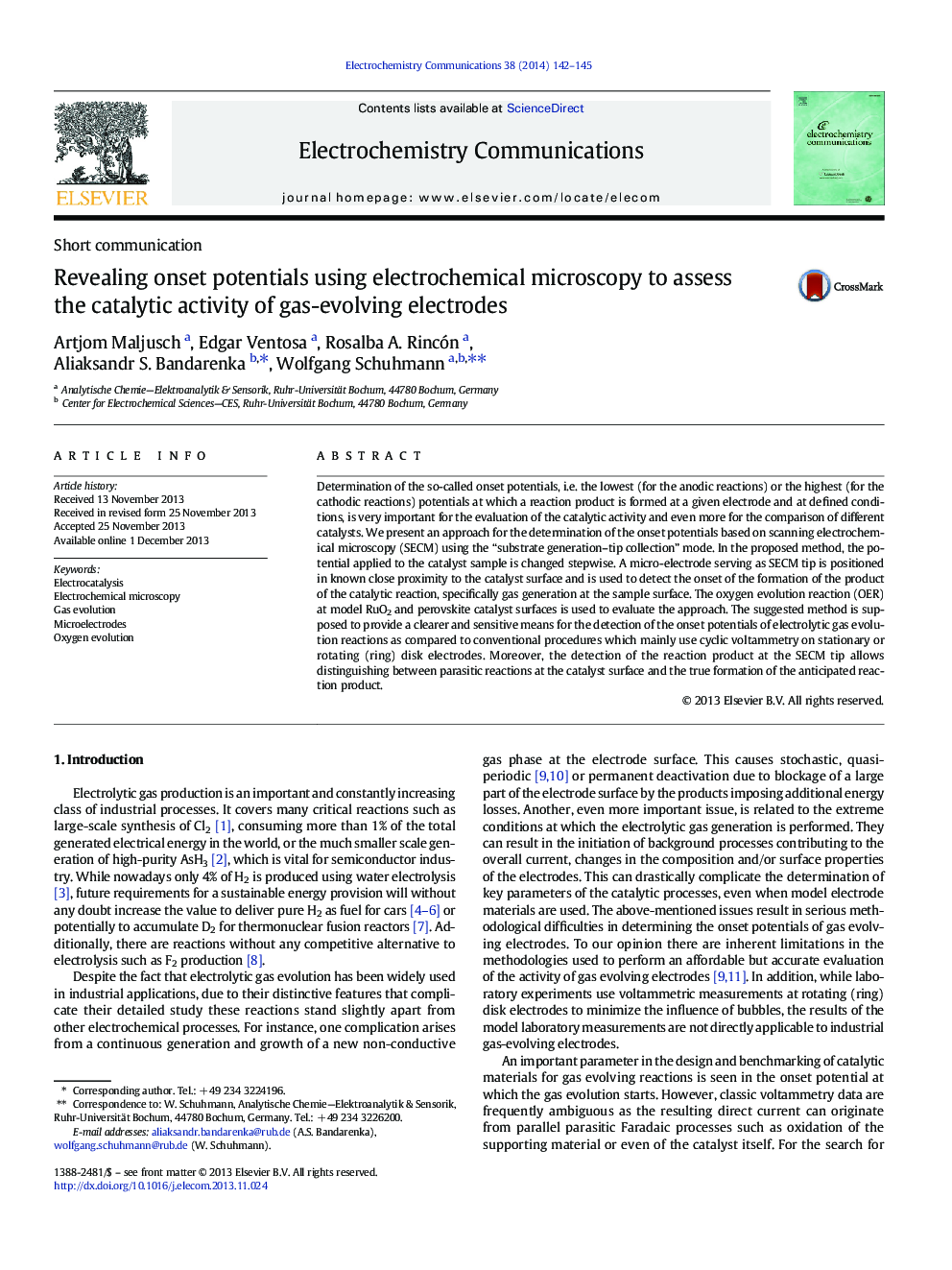| Article ID | Journal | Published Year | Pages | File Type |
|---|---|---|---|---|
| 179242 | Electrochemistry Communications | 2014 | 4 Pages |
•An approach for accurate determination of the onset potential.•Electrochemical microscopes are affordable means to implement the approach.•Microelectrodes positioned at the sample surface detect oxygen released by the sample.
Determination of the so-called onset potentials, i.e. the lowest (for the anodic reactions) or the highest (for the cathodic reactions) potentials at which a reaction product is formed at a given electrode and at defined conditions, is very important for the evaluation of the catalytic activity and even more for the comparison of different catalysts. We present an approach for the determination of the onset potentials based on scanning electrochemical microscopy (SECM) using the “substrate generation–tip collection” mode. In the proposed method, the potential applied to the catalyst sample is changed stepwise. A micro-electrode serving as SECM tip is positioned in known close proximity to the catalyst surface and is used to detect the onset of the formation of the product of the catalytic reaction, specifically gas generation at the sample surface. The oxygen evolution reaction (OER) at model RuO2 and perovskite catalyst surfaces is used to evaluate the approach. The suggested method is supposed to provide a clearer and sensitive means for the detection of the onset potentials of electrolytic gas evolution reactions as compared to conventional procedures which mainly use cyclic voltammetry on stationary or rotating (ring) disk electrodes. Moreover, the detection of the reaction product at the SECM tip allows distinguishing between parasitic reactions at the catalyst surface and the true formation of the anticipated reaction product.
Graphical abstractFigure optionsDownload full-size imageDownload as PowerPoint slide
